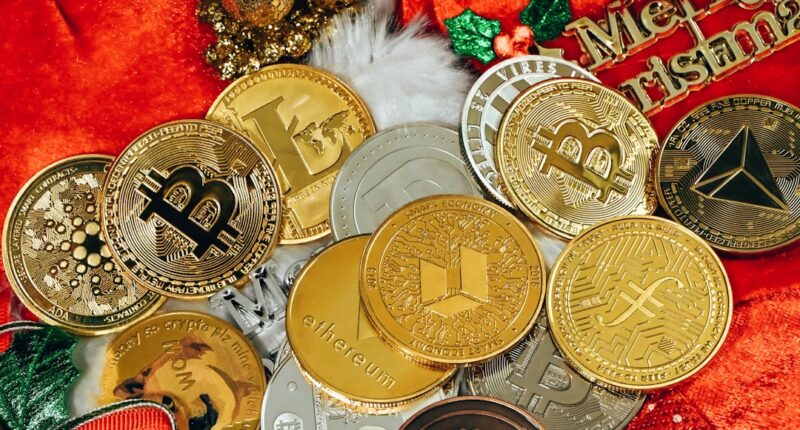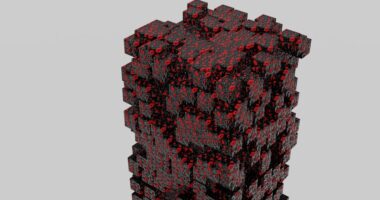Solana is a blockchain protocol that has gained significant attention and popularity in the crypto market in recent years. It was founded in 2017 by Anatoly Yakovenko, a former engineer at Qualcomm, and its main goal is to provide a scalable and secure platform for decentralized applications (dApps) and cryptocurrencies. Solana aims to address the scalability issues faced by other blockchain protocols, such as Ethereum, by utilizing a unique consensus algorithm called Proof of History (PoH).
The history of Solana dates back to 2017 when Anatoly Yakovenko started working on the project. He recognized the limitations of existing blockchain protocols, particularly in terms of scalability and speed, and set out to create a solution that could overcome these challenges. After several years of development and testing, Solana was officially launched in March 2020.
Solana’s mission is to enable fast, secure, and low-cost transactions on a global scale. The protocol aims to provide a platform that can support thousands of transactions per second, making it suitable for high-performance applications such as decentralized finance (DeFi), gaming, and more. Solana’s vision is to become the go-to blockchain protocol for developers and users alike, offering a seamless and efficient experience for building and using decentralized applications.
Key Takeaways
- Solana is a revolutionary blockchain protocol that offers high speed, scalability, and security.
- Compared to Ethereum, Solana has faster transaction processing times and lower fees, making it an attractive option for developers and users.
- Solana’s ecosystem includes a diverse range of applications and use cases, from DeFi to gaming and NFTs.
- The Solana community is actively involved in the development and governance of the protocol, with strategic partnerships and collaborations driving its growth and adoption.
- As Solana continues to disrupt the digital art market with NFTs, its future looks promising, but it also faces challenges in maintaining its competitive edge and addressing scalability issues.
Understanding the Key Features of Solana: Speed, Scalability, and Security
One of the key features that sets Solana apart from other blockchain protocols is its speed and scalability. Solana utilizes a unique consensus algorithm called Proof of History (PoH), which allows for fast transaction processing and high throughput. PoH provides a historical record of all events on the blockchain, enabling nodes to reach consensus quickly without the need for extensive computation.
In comparison to other blockchain protocols like Ethereum, Solana has demonstrated significantly higher transaction speeds. While Ethereum can process around 15 transactions per second (TPS), Solana has achieved speeds of over 65,000 TPS in real-world tests. This makes Solana a highly scalable platform that can handle a large volume of transactions without sacrificing speed or efficiency.
In terms of security, Solana employs various measures to ensure the integrity and safety of the network. The protocol utilizes a combination of cryptographic techniques, including digital signatures and hash functions, to secure transactions and prevent unauthorized access. Additionally, Solana’s consensus algorithm is designed to be Byzantine fault-tolerant, meaning it can withstand malicious attacks and maintain the integrity of the network even if some nodes act maliciously.
Solana vs Ethereum: A Comparative Analysis of the Two Leading Blockchain Protocols
When comparing Solana and Ethereum, two of the leading blockchain protocols in the market, there are several key differences to consider. One of the main differences lies in their consensus algorithms. Ethereum currently uses a Proof of Work (PoW) consensus algorithm, which requires miners to solve complex mathematical puzzles to validate transactions and add them to the blockchain. On the other hand, Solana utilizes the Proof of History (PoH) consensus algorithm, which provides a more efficient and scalable approach to reaching consensus.
In terms of transaction speeds and fees, Solana has a clear advantage over Ethereum. As mentioned earlier, Solana can process thousands of transactions per second, while Ethereum is limited to around 15 TPS. This significant difference in transaction speeds allows Solana to handle a much higher volume of transactions, making it more suitable for applications that require fast and efficient processing.
Furthermore, Solana’s low transaction fees make it an attractive option for users and developers. Ethereum has been plagued by high gas fees in recent years, making it expensive for users to interact with dApps and execute transactions on the network. Solana’s low fees make it more accessible and affordable for users, which could potentially drive greater adoption and usage of the protocol.
When it comes to developer communities, both Solana and Ethereum have vibrant and active communities. Ethereum has a larger and more established developer community, with a wide range of tools, resources, and documentation available for developers to build on the platform. However, Solana’s community is rapidly growing, and the protocol has been successful in attracting developers with its fast and scalable infrastructure. As Solana continues to gain traction in the market, its developer community is expected to expand further.
The Rise of Solana: Exploring Its Growth and Adoption in the Crypto Market
Since its launch in 2020, Solana has experienced significant growth and adoption in the crypto market. The protocol’s market capitalization has surged, reaching billions of dollars, and its trading volume has also seen substantial increases. This growth can be attributed to several factors, including Solana’s unique features, partnerships, and collaborations.
Solana has formed strategic partnerships with various companies and projects in the crypto space, which has helped drive its adoption. For example, Solana has partnered with Serum, a decentralized exchange (DEX) built on the Solana blockchain. This partnership has enabled Serum to offer fast and low-cost trading to its users, leveraging Solana’s high-performance infrastructure.
In addition to partnerships, Solana has also gained adoption in various industries. The protocol’s scalability and speed make it well-suited for applications in decentralized finance (DeFi), gaming, non-fungible tokens (NFTs), and more. Several DeFi projects have already built on Solana, offering users fast and efficient financial services. Furthermore, Solana’s low transaction fees make it an attractive platform for NFT creators and collectors who want to mint and trade digital assets without incurring high costs.
Solana’s Ecosystem: An Overview of Its Diverse Applications and Use Cases
Solana’s ecosystem consists of various components that support its diverse applications and use cases. The protocol provides a scalable and secure platform for developers to build decentralized applications (dApps) and smart contracts. Solana’s infrastructure allows for fast and efficient transaction processing, making it suitable for high-performance applications in finance, gaming, and other industries.
In the finance sector, Solana has gained traction in the decentralized finance (DeFi) space. Several DeFi projects have built on Solana, offering users fast and low-cost financial services such as lending, borrowing, and trading. Solana’s scalability and low transaction fees make it an attractive platform for DeFi applications that require high throughput and cost-effective transactions.
In the gaming industry, Solana has the potential to revolutionize the way games are built and played. The protocol’s fast transaction speeds and low fees enable seamless in-game transactions and interactions, creating a more immersive gaming experience. Solana’s infrastructure also supports the creation of non-fungible tokens (NFTs), which can be used to represent in-game assets, collectibles, and more.
Furthermore, Solana has applications beyond finance and gaming. The protocol can be used for supply chain management, identity verification, content distribution, and other use cases that require fast and secure transaction processing. As Solana continues to grow and gain adoption, its ecosystem is expected to expand further, offering even more diverse applications and use cases.
The Solana Community: Insights into Its Development and Governance Structure

The Solana community plays a crucial role in the development and governance of the protocol. The community consists of developers, validators, token holders, and other stakeholders who contribute to the growth and success of Solana. The community-driven approach to development has been a key factor in Solana’s rapid growth and adoption.
Solana’s development process is open-source, allowing anyone to contribute code, propose improvements, or suggest new features. This open approach encourages collaboration and innovation within the community, fostering a vibrant and dynamic ecosystem. Developers can build on Solana using familiar programming languages such as Rust, C, and C++, making it accessible to a wide range of developers.
In terms of governance, Solana utilizes a decentralized governance model that allows token holders to participate in decision-making processes. Token holders can vote on proposals and changes to the protocol, ensuring that the community has a say in the direction and development of Solana. This governance structure promotes transparency and decentralization, aligning with the core principles of blockchain technology.
Solana’s Partnerships and Collaborations: A Look at Its Strategic Alliances
Solana has formed strategic partnerships and collaborations with various companies and projects in the crypto space. These partnerships have helped drive the adoption and growth of Solana, while also providing additional value to users and developers.
One notable partnership is with Serum, a decentralized exchange (DEX) built on the Solana blockchain. Serum leverages Solana’s high-performance infrastructure to offer fast and low-cost trading to its users. This partnership has helped increase liquidity on the Solana network and has attracted more users to both Serum and Solana.
Solana has also partnered with Chainlink, a decentralized oracle network that provides real-world data to smart contracts. The integration of Chainlink’s oracle technology with Solana allows developers to build dApps that can securely interact with external data sources, opening up new possibilities for decentralized applications.
Furthermore, Solana has collaborated with other blockchain projects such as Terra, a stablecoin platform, and Audius, a decentralized music streaming platform. These collaborations have enabled cross-chain interoperability and have expanded the use cases for Solana’s infrastructure.
NFTs on Solana: How the Protocol is Disrupting the Digital Art Market
Solana has emerged as a prominent player in the NFT (non-fungible token) market, disrupting the traditional art market and opening up new opportunities for artists and collectors. NFTs are unique digital assets that can represent ownership of digital art, collectibles, virtual real estate, and more. Solana’s fast transaction speeds and low fees make it an ideal platform for minting, trading, and collecting NFTs.
Solana’s infrastructure allows for seamless and efficient NFT transactions, enabling artists to mint and sell their digital creations without incurring high gas fees. This accessibility has attracted a growing number of artists to the Solana ecosystem, as they can reach a wider audience and retain a larger portion of their sales.
Additionally, Solana’s scalability makes it possible to host large-scale NFT marketplaces and platforms. These platforms provide a marketplace for artists to showcase and sell their NFTs, while also offering collectors a wide range of digital assets to choose from. The combination of Solana’s speed, scalability, and low fees has positioned the protocol as a strong contender in the NFT market.
Ethereum’s Response to Solana: Examining the Impact of Solana on Ethereum News
Solana’s rise in popularity has not gone unnoticed by Ethereum, the leading blockchain protocol in terms of market capitalization and adoption. Ethereum has been the go-to platform for developers and users in the crypto space for several years, but Solana’s emergence as a scalable and high-performance alternative has posed a challenge to Ethereum’s dominance.
Ethereum has responded to Solana’s rise by exploring various scalability solutions of its own. The most notable solution is Ethereum 2.0, which aims to transition the network from a Proof of Work (PoW) consensus algorithm to a Proof of Stake (PoS) algorithm. This transition is expected to significantly improve Ethereum’s scalability and reduce transaction fees.
In addition to Ethereum 2.0, Ethereum has also seen an increase in layer 2 solutions that aim to improve scalability and reduce congestion on the network. These layer 2 solutions, such as Optimism and Arbitrum, allow for faster and cheaper transactions by processing them off-chain and settling them on the Ethereum mainnet.
The impact of Solana’s rise on Ethereum news and the broader crypto market has been significant. It has sparked discussions and debates about the scalability and performance of different blockchain protocols, leading to increased innovation and competition in the space. As Solana continues to gain traction, it is likely that Ethereum will continue to explore new solutions and improvements to maintain its position as a leading blockchain protocol.
The Future of Solana: Predictions and Challenges for the Innovative Blockchain Protocol
The future of Solana looks promising, with the protocol poised for further growth and adoption in the crypto market. Solana’s unique features, such as its speed, scalability, and low fees, make it an attractive option for developers and users alike. As more applications are built on Solana and more users join the network, its ecosystem is expected to expand further.
However, Solana also faces several challenges that it must overcome to realize its full potential. One of the main challenges is maintaining decentralization while scaling the network. As Solana grows, it will need to ensure that a diverse set of validators participate in securing the network, preventing centralization of power.
Another challenge is competition from other blockchain protocols. While Solana has positioned itself as a scalable and high-performance alternative to Ethereum, there are other protocols that offer similar features. Solana will need to continue innovating and differentiating itself from competitors to maintain its position in the market.
Despite these challenges, the future looks bright for Solana. The protocol’s rapid growth and adoption demonstrate its potential to become a major player in the blockchain industry. With its fast transaction speeds, low fees, and vibrant ecosystem, Solana is well-positioned to drive innovation and disrupt various industries in the years to come.
If you’re interested in learning more about blockchain protocols, you might want to check out this insightful article titled “Hello World: A Beginner’s Guide to Blockchain Technology” from ETH News. This article provides a comprehensive introduction to the world of blockchain and its potential applications. It’s a great starting point for anyone looking to understand the fundamentals of this innovative technology. Read more
FAQs
What is Solana?
Solana is a high-performance blockchain protocol designed to support decentralized applications and marketplaces. It aims to provide fast transaction processing and low fees while maintaining high security and decentralization.
How does Solana differ from other blockchain protocols?
Solana uses a unique consensus mechanism called Proof of History (PoH) that allows for fast transaction processing and high scalability. It also uses a combination of other consensus mechanisms such as Proof of Stake (PoS) and Tower BFT to ensure security and decentralization.
What are some of the key features of Solana?
Some of the key features of Solana include fast transaction processing, low fees, high scalability, and support for smart contracts. It also has a built-in decentralized exchange (DEX) called Serum and supports interoperability with other blockchains.
What is the Solana icon and what does it represent?
The Solana icon is a stylized representation of the sun, which is a nod to the protocol’s focus on speed and efficiency. The icon also features a series of concentric circles, which represent the layers of security and decentralization that are built into the protocol.
Who created Solana?
Solana was created by Anatoly Yakovenko, a former software engineer at Qualcomm and Dropbox. Yakovenko founded Solana Labs in 2017 to develop the protocol and has since built a team of experienced developers and advisors to help bring it to market.
What are some of the use cases for Solana?
Solana can be used for a wide range of decentralized applications and marketplaces, including gaming, finance, social media, and more. Its fast transaction processing and low fees make it well-suited for high-volume applications that require quick and efficient processing.






9 comments
Can you be more specific about the content of your article? After reading it, I still have some doubts. Hope you can help me.
Online gaming can be fun, but responsible bankroll management is key. Seeing platforms like 365 jili game emphasize verification (KYC) is a good sign – security matters! Remember to play within your limits, always. It’s about entertainment, not chasing losses.
Thank you for your sharing. I am worried that I lack creative ideas. It is your article that makes me full of hope. Thank you. But, I have a question, can you help me?
Your article helped me a lot, is there any more related content? Thanks!
That’s a bold prediction! Seeing platforms like jljl13 club adapt with localized payment options (GCash, PayMaya) is smart for the PH market. Retention via VIP tiers seems key these days, too. Interesting analysis!
Thanks for sharing. I read many of your blog posts, cool, your blog is very good. https://www.binance.info/bn/register-person?ref=UM6SMJM3
Can you be more specific about the content of your article? After reading it, I still have some doubts. Hope you can help me.
I don’t think the title of your article matches the content lol. Just kidding, mainly because I had some doubts after reading the article. https://www.binance.com/ro/register?ref=V3MG69RO
Dice games are so much fun – the math behind them is fascinating! Seeing platforms like phillucky online casino offer diverse options, including those engaging fishing games, really expands the possibilities for players in the Philippines. Great content!